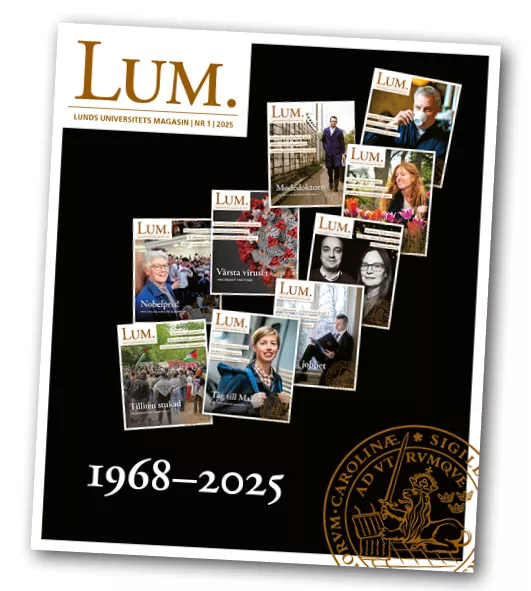Today it is difficult to find anyone with a contrasting opinion. One might think that the overall ownership and management structure is a bit complicated, and everyone sits on each other's boards. But as the new head of division at LU Innovation, Niclas Nilsson, says:
“Regardless of the complex structure, everyone is extremely keen for everything to work here.”
Likewise, his colleague business developer Thomas Rundqvist cannot see any cracks behind the shiny façade of the newest building, The Spark, where he works together with the rest of the Research, Collaboration and Innovation Division (FSI). There are also several larger, well-established companies that LU Innovation is particularly grateful for given that they have already made the journey that their researchers with business ideas have ahead of them.
A collaboration in life sciences
“New small companies are dependent on really good board members and here at Medicon Village there is a fantastic pool to draw from,” says Thomas Rundqvist.
In January 2012, AstraZeneca moved to Mölndal and handed over the keys to their research facility to the newly established Medicon Village. Over 80,000 square metres of premises consisting of laboratories and office space were to be filled and become the base for a broad regional collaboration initiative in life science. The chair of the board of Lund University at the time, Allan Larsson, had done much of the preparatory work at the request of the Research and Innovation Council of Skåne (FIRS), which also included Region Skåne, the City of Lund and the City of Malmö. The donor, Mats Paulsson, contributed SEK 100 million to the purchase of the premises, and at the end of that year 70 organisations with 570 employees had moved in. The following year, the cancer researchers arrived, initially around 200 of them. Most came from nearby BMC but also from Malmö.
Fears of a fragmented Faculty of Medicine were expressed and of the risk that Medicon Village would become a loss-maker in the form of empty premises with dated equipment that no one needed. Today, Heiko Herwald, vice dean of the Faculty of Medicine and member of the board of Medicon Village Innovation, is able to confirm that this did not happen.
“It is true that the faculty is not in the strongest financial position at the moment, but this is due to the increase in the retirement age, rising salary costs and a low increase in government funding,” he says.
He is unaware of any empty premises anywhere.
“It is full at BMC, likewise at CRC in Malmö and it looks to be the same here at Medicon Village,” says Heiko Herwald.
The research landscape has changed
Petter Hartman, CEO of Medicon Village Innovation, confirms this and is grateful for the excavators that are currently building car parks and he is hopeful about the northern area where there is still land for expansion.
“We have companies and businesses queuing up here right now. In order to meet the demand, further expansion needs to be planned for in the coming years,” says Petter Hartman.
At the moment, there are approximately 2,700 people distributed across 180 organisations, of which companies account for 30 per cent, Region Skåne accounts for 50 per cent and Lund University 20 per cent.
Heiko Herwald estimates the number of medical research teams to be around 20 and he says the research landscape has changed.
“The classic individual researcher no longer exists, as networks and collaboration have become so much more important,” he says, to explain why facilities like this are needed.
"Medicon Village has matured"
It is primarily groups working on breast and prostate cancer that have established themselves in Medicon Village, although stem cell research is also important here. A regenerative centre is under way and last year cancer researchers came together at the Lund University Cancer Centre (LUCC). The Peritus Clinic with specialist expertise in prostate treatment is also found here and there are proposals for a corresponding breast cancer clinic.
When Carl Borrebaeck, who is himself a cancer researcher, looks back in time and then at the research facility today, he feels very pleased.
“Medicon Village has matured now and everything an entrepreneur could want can be found here. All the innovation and incubation activities in the form of LU Innovation and the Smile incubator are found here. And the conditions for cancer research have greatly improved.”
His own business has been very successful, and he has started five companies, four of which are in Medicon Village, employing between 150 and 200 people. Through one of these companies, Immunovia, an early pancreatic cancer test was recently clinically introduced in the American market. It is a simple blood test and is now used for people who have the disease in their family and who find themselves in the at-risk group.
“If the disease is detected early, the chance of survival increases from five to fifty per cent,” says Carl Borrebaeck.
Further development
At LU Innovation, Thomas Rundqvist explains that there are many interesting ideas for further development among the life science researchers in Lund, but that the process to establish a company is a long one. However, LU Holding has five companies that originated in research at Lund University which are now located at Medicon Village. SAGA Diagnostics AB and Gedea Biotech AB, among others.
CEO Petter Hartman is keen to see more companies at the facility and also says that research, the academic part, is the engine of Medicon Village. This autumn, the research facility will celebrate its 10-year anniversary, and, among other things, scientific symposiums are planned.





